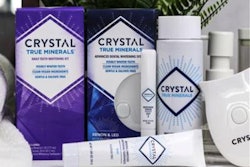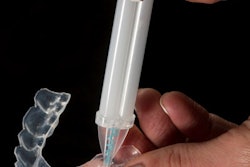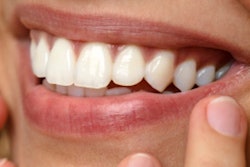
Whitening may prevent biofilm buildup on restored teeth, according to the findings of a new study. Restorations bleached with 35% hydrogen peroxide and 15% carbamide peroxide had significantly lower levels of biofilm than those left untreated.
Teeth whitening is a common in-office procedure, including for patients with composite restorations. Researchers from Iran studied whether whitening affects biofilm formation and surface roughness of these materials. They published their findings in the the lastest issue of the Dental Research Journal (July-August 2019, Vol. 16:4, pp. 264-270).
"Knowledge about the effect of bleaching on behavior of composite resins is important to find a suitable composite resin for restoration of teeth undergoing bleaching," stated lead author Mahmoud Bahari, DDS, MSD, from Tabriz Medical Science University in Tabriz, Iran. "This study aimed to assess the effect of different bleaching protocols on surface roughness and biofilm formation on a silorane-based composite resin."
Effect of bleaching on biofilm
Some previous studies have suggested that bleaching may increase surface roughness, which is a risk factor for biofilm formation. The researchers of the current study investigated whether three common tooth bleaching regimens increased surface roughness or biofilm formation on 60 restoration models.
They made the restoration molds using the A3 shade of Filtek P90 (3M). They then divided the composite models into four groups:
- Control: Unbleached composite samples stored in distilled water for two weeks.
- CP: Samples bleached with 15% carbamide peroxide for two hours per day for two weeks.
- HP: Samples bleached with 35% hydrogen peroxide for 30 minutes every three to five days for two weeks.
- Light-activated HP: Samples bleached with 35% hydrogen peroxide activated by an LED light for 40 minutes; bleaching occurred one time, as specified by manufacturer recommendation.
All three restoration groups exposed to bleaching had significantly less biofilm formation than the control group, the researchers found. The two groups with hydrogen peroxide fared better than the carbamide peroxide group, and the light-cured hydrogen peroxide restorations performed best overall.
 CFU = colony-forming unit.
CFU = colony-forming unit.The researchers didn't find significant differences in surface roughness among the groups. This could be because they used the same type of restorative material, they noted.
"One major cause of reduction in biofilm formation in the bleached groups may be the antibacterial effects of the bleaching agents," the authors wrote. "Some previous studies have shown that [hydrogen-peroxide]-based bleaching agents have bactericidal properties."
More research needed
One key limitation of the research is that it was conducted as an in vitro study and, therefore, is not necessarily representative of clinical scenarios. More studies are needed to verify the findings, the authors noted.
Nevertheless, the results were significant and indicate that tooth bleaching may reduce biofilm formation for at least some types of restorations.
"Bleaching decreased biofilm formation," the authors concluded. "The lowest biofilm formation was noted in the group subjected to light-activated 35% peroxide."



















